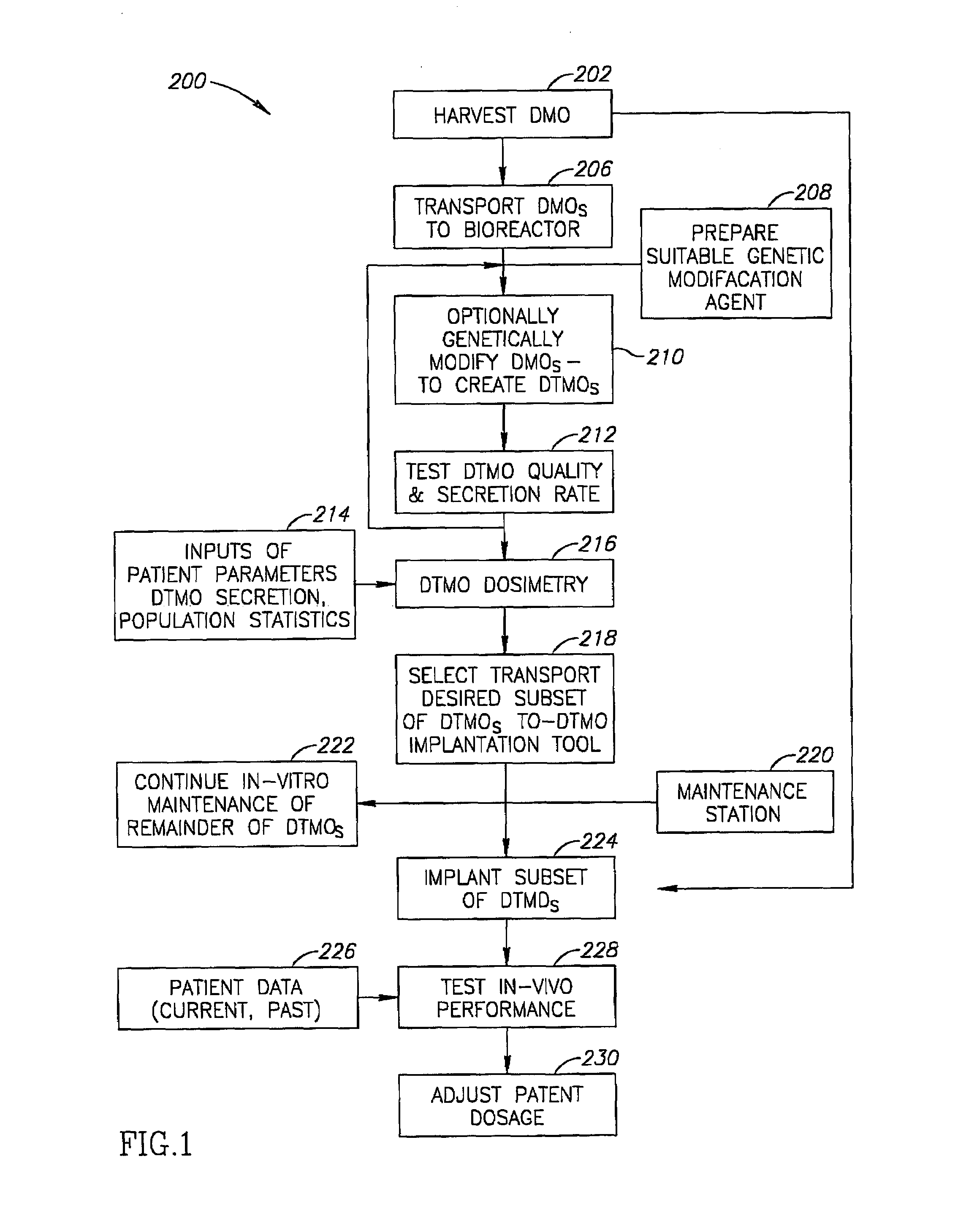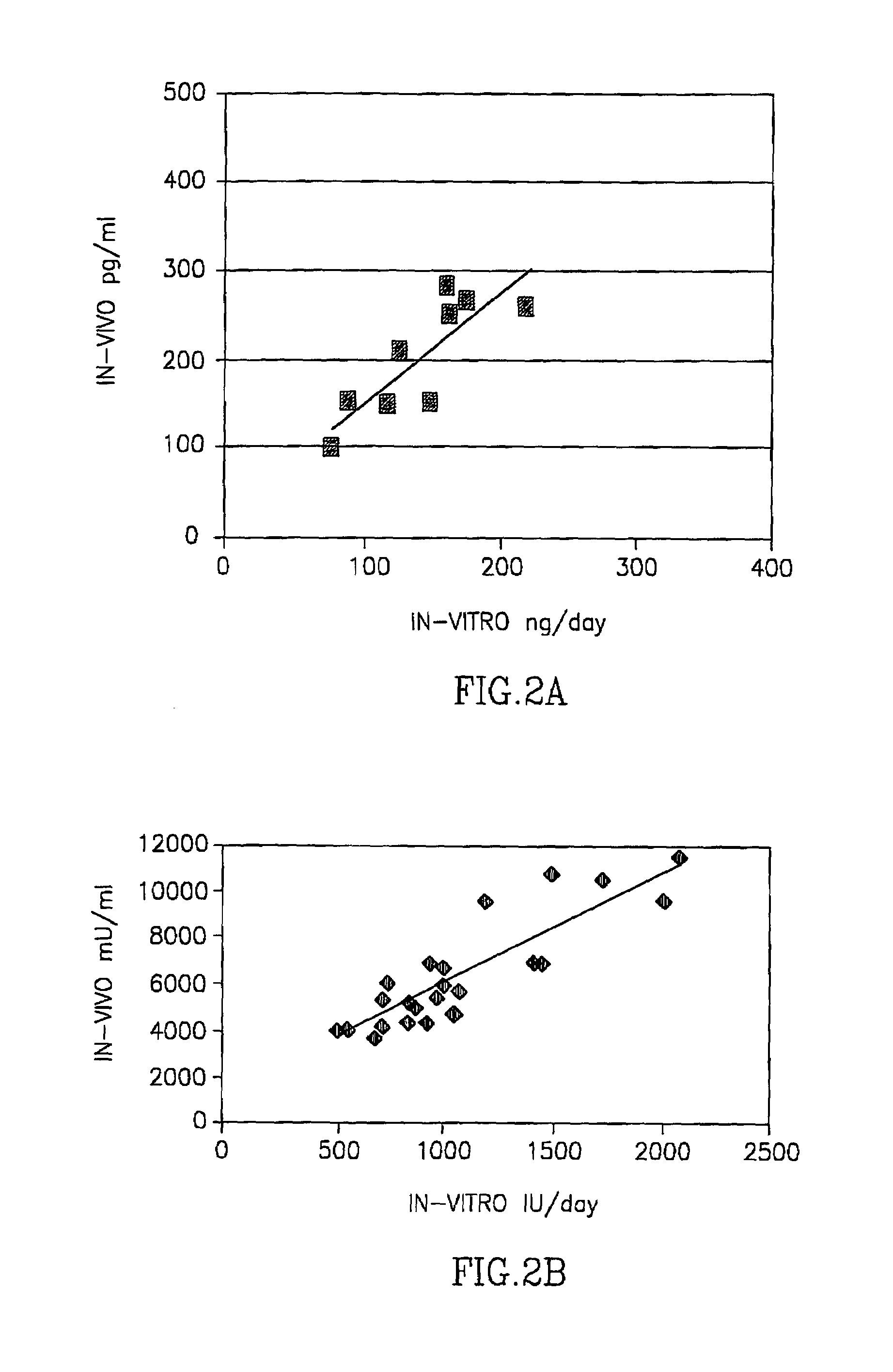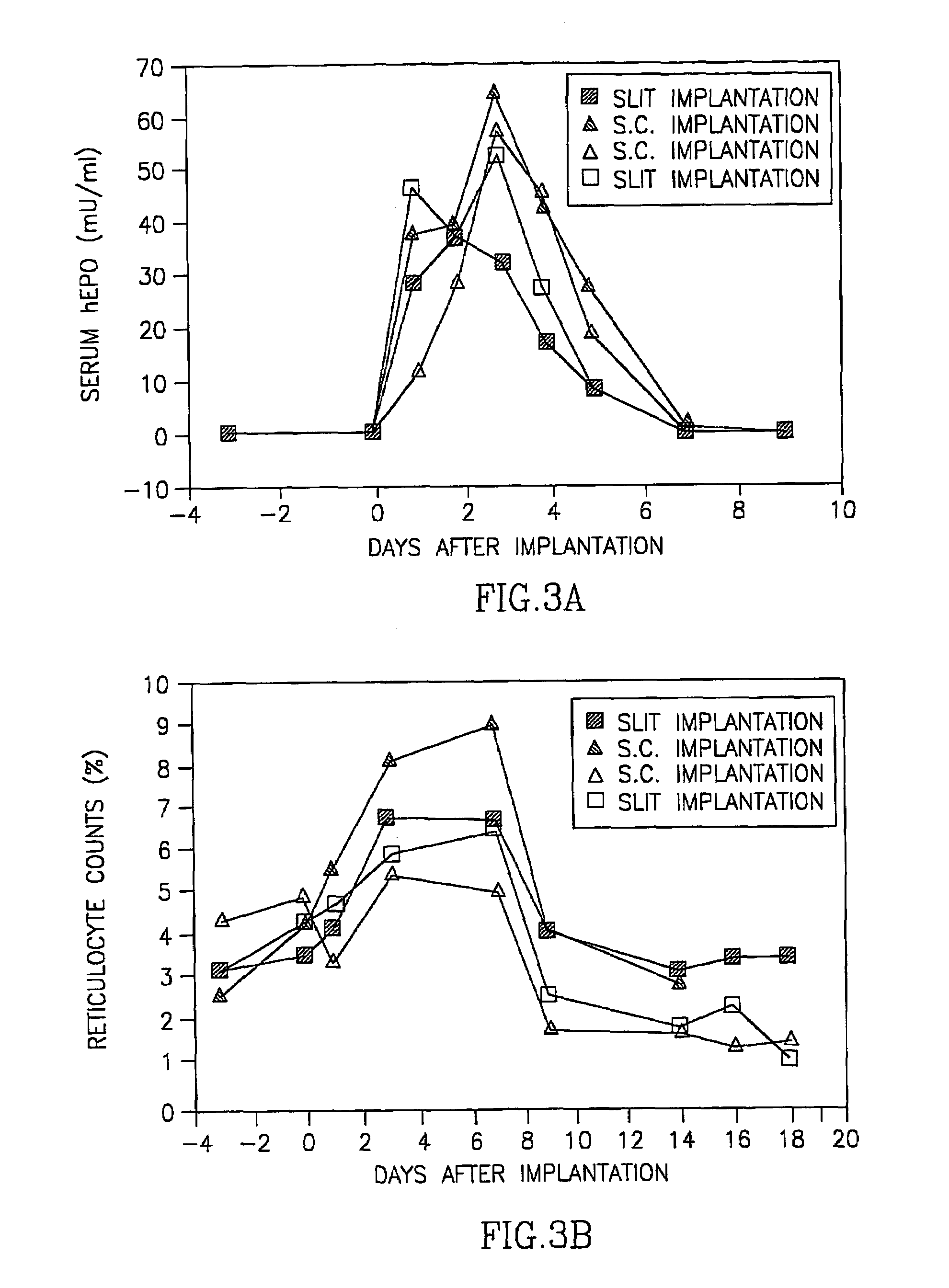Dermal micro organs, methods and apparatuses for producing and using the same
a microorgan and skin technology, applied in the field of tissue-based microorgans and therapeutic tissue-based microorgans, can solve the problems of limited method of delivery, superficial wounds on patients, and limitations on the size of molecules that can be utilized, and achieve the effect of high production and secretion level and skill
- Summary
- Abstract
- Description
- Claims
- Application Information
AI Technical Summary
Benefits of technology
Problems solved by technology
Method used
Image
Examples
example 1
In Vitro Secretion Levels of Human Erythropoietin by DTMO-hEPO
[0206]Experiments were conducted to assay the variability of in vitro hEPO secretion level between DTMOs-hEPO obtained from different human skin samples.
Experimental Procedure
[0207]DTMO-hEPO was prepared (in triplicates) from skin samples obtained from six different human subjects and hEPO secretion levels were measured at various point in time, as indicated in FIG. 4, after the viral vector was washed.
Experimental Results
[0208]The DTMO-hEPO secretion levels were similar among the different human skin samples. In addition, the DTMO-HEPO secretion levels were similar to the secretion levels of hEPO previously obtained from split thickness TMO-hEPO (data not shown).
example 2
[0209]In order to verify that the DTMO contains mainly dermal components, a histological analysis was performed. MOs were prepared from either split thickness skin or dermal skin samples and histological analysis was performed by a dermato-pathologist. As can be seen on the left side of FIG. 5, the DTMO contains dermal layers and dermal components without residual basal and / or epidermal layers. In comparison, the split thickness TMO, shown on right side of FIG. 5, contains all the skin layers including the basal and epidermal layers.
example 3
Immunocytochemistry Studies
[0210]To study which cells are transduced in the DTMO-hEPO tissue, a histological immunohistochemistry analysis of DTMO-hEPO was performed on day 9 post-harvesting, using an anti-hEPO monoclonal antibody (1:20 dilution). Analysis revealed strong staining of dermal fibroblasts, as shown in FIG. 6. The staining was spread throughout the entire DTMO.
PUM
| Property | Measurement | Unit |
|---|---|---|
| inner diameter | aaaaa | aaaaa |
| diameter | aaaaa | aaaaa |
| diameter | aaaaa | aaaaa |
Abstract
Description
Claims
Application Information
 Login to View More
Login to View More - R&D
- Intellectual Property
- Life Sciences
- Materials
- Tech Scout
- Unparalleled Data Quality
- Higher Quality Content
- 60% Fewer Hallucinations
Browse by: Latest US Patents, China's latest patents, Technical Efficacy Thesaurus, Application Domain, Technology Topic, Popular Technical Reports.
© 2025 PatSnap. All rights reserved.Legal|Privacy policy|Modern Slavery Act Transparency Statement|Sitemap|About US| Contact US: help@patsnap.com



